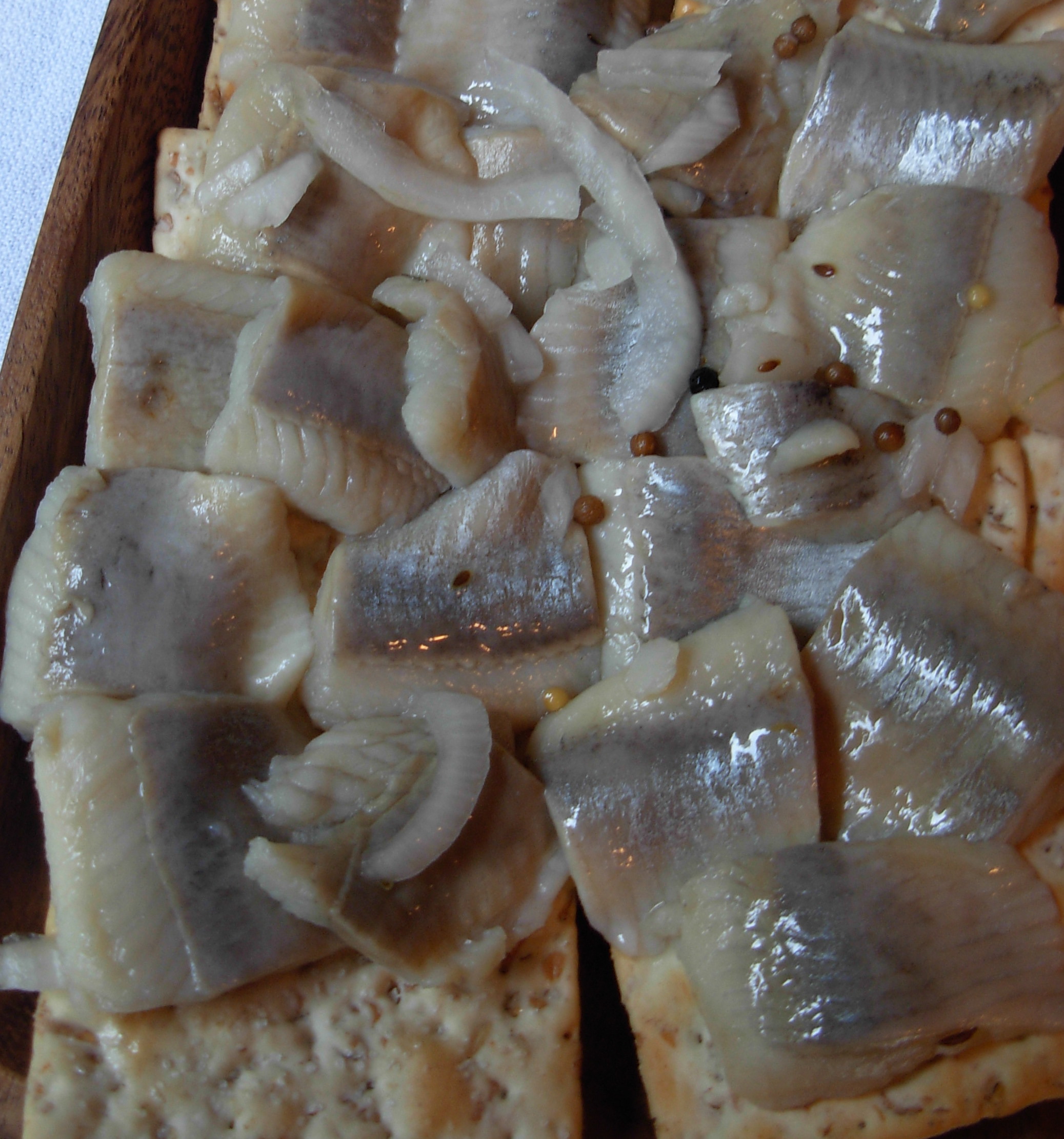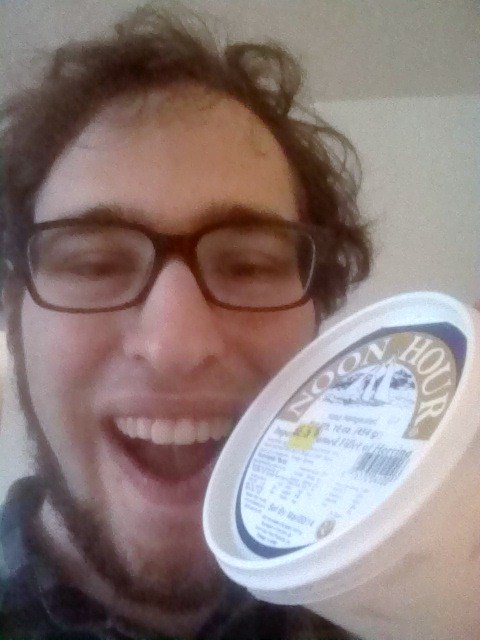
I will never forget the day I brought herring sandwiches to school.
There I was, an awkward little seven-year-old, eating a vinegary and odorous pickled herring sandwich on brown bread in the middle of the lunch room. A delicious and very filling lunch for a first-grader. And there were the faces of my (mostly Jewish) classmates, shocked that I was eating something “so gross” and “so yucky.” It is more a testament to my stubbornness than my bravery that I did not understand their disgust, and continued to occasionally grace the lunchroom with pickled herring sandwiches throughout elementary school. And often, I would be asked: “why are you eating that?”
Well, it’s good. Certainly better (and more kosher) than Lunchables!
I love the Ashkenazi Jewish culinary tradition. I love the matzoh balls, the latkes, and the hamantashen. Hell, I make my own poppy seed filling every year. But I also love some of the things that a lot of American Ashkenazim don’t celebrate quite as publicly – or, in some cases, really eat anymore. Let’s also discuss lung, herring, ptcha, and the joy of real kishke!
Who doesn’t love a good cholent? And at the bottom of this cholent, a kishke – filled with bready, meaty, and fatty goodness; the terror of cardiologists and loved child of generations of Jewish grandmothers – promises great delight. Today, a kishke-wrapper is most commonly used here in the U.S. to make the treat. But the traditional method is to stuff a cow intestine – yes, a cow intestine – and stick that on the bottom of the cholent pot. The result is a soft, tender wrapping – no removing plastic here – around the fatty goodness of the stuffing. However, many would not believe that such an organ is edible or safe to eat! Instead, a reminiscence of the tastiness of intestine kishke by an older Jew is more likely to promote shocked reactions and unusual facial expressions from a younger crowd.
Another food that promotes shocked reactions is, as I noted, herring. Pickled, then preserved in its own fat, dunked in cream sauce or vinegar, or ground up into a salty salad, herring was the Lithuanian Jewish breakfast favorite for decades. (And not just Jews – Norwegians say spiser du sild, blir du snill –“you eat herring, you become nice.”) It’s still the staple at many synagogue kiddushes. Yet, for many young people, the idea of pickled herring or the image is something that provokes a visceral disgust. It’s too smelly, too sour, and too slimy for many palates. To consume herring then, is not just a simple act of rejoicing in the kingdom of pickled fish, but a reactionary act of tastes.
Then there are the more regionalized traditions from before the time that the creation of Israel erased some traditional Jewish cooking led to some merging in the Mizrahi and Ashkenazi culinary traditions alike. Some Sephardi Jews, for example, celebrate certain occasions with the consumption of lamb brains – a highly prized and nowadays disliked delicacy. However, it does mean that Jews have been eating brains for longer than zombies. Meanwhile, Lithuanian Jews – based on local non-Jewish dishes involving very treif things – created ptcha, a calf’s foot swimming in its own wobbly gelatin. It’s not terribly attractive, but it is quite delicious. Some young people like it – ptcha was my father’s childhood favorite in South Africa, but in an age of TV dinners, most young Jewish folk in the Anglosphere found ptcha more disgusting than delicious. My own family stuffs kreplach with cow lung – a tradition found among many Lithuanian Jewish families. The resultant stuffing – a soft, meaty filling blending with the dough – is comforting and juicy.
Some of these things are, sadly, illegal in the United States. Cow lung is illegal – partly because it takes quite a long time to inspect to federal standards. Cow intestine is also illegal for similar reasons. Other items are expensive and often only eaten by Jewish communities. One herring salesman told the New York Times a few years ago that that “in Minnesota and Florida, when every old Jew or Scandinavian dies, we lose a case of herring.” Calf’s foot, essential for ptcha, is an adventure and a half to acquire.
But then there are the “scary” foods that are more easily found. Pickles, for example: many find the Ashkenazi obsession with various pickled products – cucumbers, onions, even apples – to be mildly disgusting, or worse. Yet, for others – Jews such as former New York City mayor Ed Koch and non-Jews such as Snooki alike, pickles are a treasured childhood delight. And, unlike admittedly delicious matzoh balls or latkes, it is not something that quite aligns with American tradition. Matzoh balls are reminiscent of Sunday-soup dumplings, and latkes of hash browns, but despite a longstanding American pickling tradition, many other Americans find pickles to simply be “yucky.” Pull out a wet, briny green cucumber in parts of the country, and you’re a marked man. The concentration of pickle sales – after all – is comparable to the concentration of Jewish communities in the United States. When I moved to my not particularly Jewish area of Chicago in 2010, I was sad to see a much lower availability of pickles.
In short, I think we should still celebrate the “accessible” parts of Jewish cuisine. Matzoh balls are fantastic, latkes are messengers for the World to Come, and, let’s be honest, bagels are perhaps our greatest gift to the American breakfast. But this does not mean we should mask the “yucky,” “un-American,” or “scary” parts of our culinary heritage either. Herring, ptcha, and brains are just as much a part of our culinary lineage, and we should celebrate them. For their tastiness, for the resourcefulness of our ancestors, and for the fact that well…it’s actually cool that you can take these strange items and make tasty food out of them!
Keep eating your herring sandwiches, kids.
Your correspondent, really psyched to eat this herring.
Jonathan P. Katz is a student at the University of Chicago.

